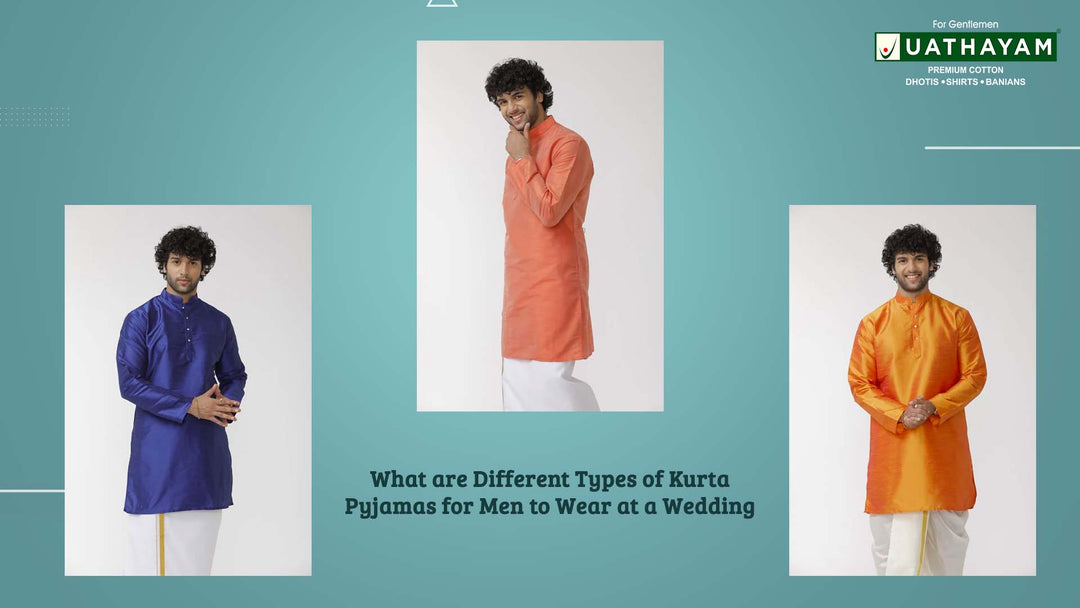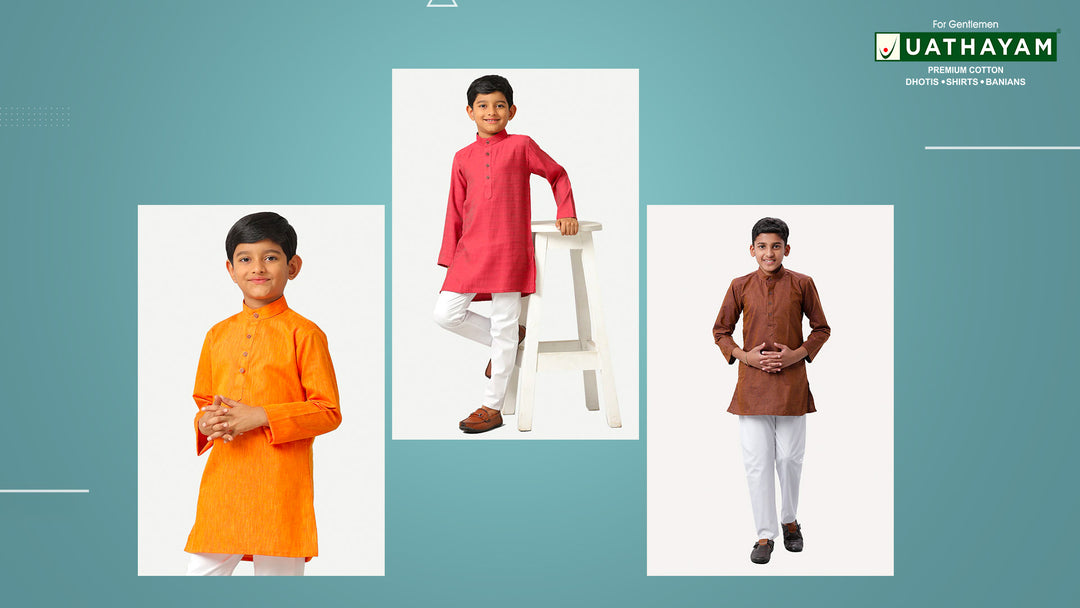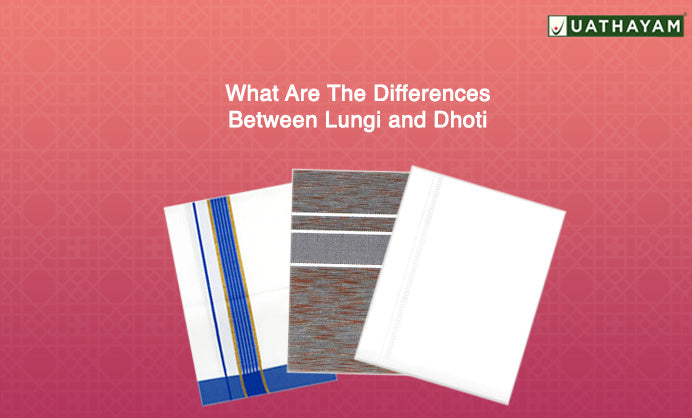What Are The Differences Between Lungi and Dhoti? Let's Explore
Across India, the lungi and dhoti are essential components of traditional clothing, each possessing a distinct allure and cultural importance.
Both outfits have a rich historical background, but they are distinct in terms of their material, design, and style, and they have different functions.
The subtle differences between the lungi and dhoti are examined in this article, which also highlights their cultural significance and place in the overall scheme of traditional clothing.
Historical Background of Lungi and Dhoti
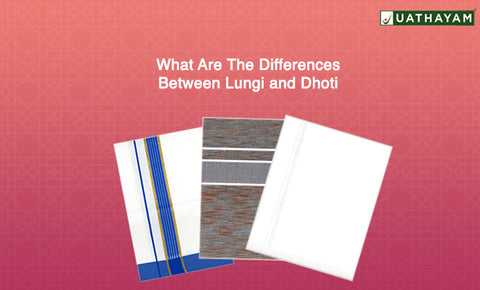
The dhoti, which is frequently regarded as a representation of Indian customs, dates back to the Vedic era. The numerous references to it demonstrate its long-standing presence in Indian culture found in Indian epics and scriptures. For Indian men, the dhoti has long been a wardrobe essential that crosses socioeconomic lines and represents cultural identity.
On the other hand, the lungi are thought to have originated in South India and Southeast Asia, although their history is not as well-documented as that of the dhoti.
In these areas, men have worn it frequently because of its comfort and adaptability. The lungi is very popular in many Asian countries; each country adds a twist to its style and uses it according to the local climate and culture.
These historically significant clothes still have meaning in their cultural contexts because they honour tradition while still being functional for today's demands.
Cultural Significance Of Lungi and Dhoti
The Lungi and Dhoti are clothing items and representations of cultural history. The dhoti is regarded as a symbol of Indian tradition and is frequently worn to formal events and religious rituals. Many people respect it, especially in Hindu culture, where it stands for purity and tradition. Wearing dhotis allows politicians and spiritual leaders to appeal to nationalistic and cultural feelings.
In contrast, although the lungi has a long history, it is more commonly associated with casual or housewear in many regions of India. However, the lungi is more commonly worn in public and is sometimes regarded as formal clothing in nations like Bangladesh and Sri Lanka. In these areas, the lungi is a popular option for daily wear due to its easygoing and comfortable vibe, which combines practicality with cultural identity.
Both garments, while serving different cultural and functional purposes, are integral to the fabric of their respective societies. They carry with them stories of the past, present, and evolving cultural norms, showcasing the diversity and richness of South Asian textile traditions.
Material and Design Of Lungi and Dhoti
The materials used to make lungis and dhotis are a reflection of their intended use and cultural significance. The light, breathable materials used to make dhotis, such as cotton or silk, are ideal for the hot climate of India. They are typically white or cream, but on special occasions, they could have elaborate borders or patterns that represent prestige or a particular region.
On the other hand, depending on their intended purpose, lungis can be made of cotton, silk, or synthetic fabrics. Silk lungis are saved for more formal occasions, while cotton lungis are typically made for comfort and breathability. Bright colours and patterns—checks and stripes being especially well-liked—are what set the lungi apart. Because they reflect regional customs and tastes, these designs can differ greatly between locations.
While the dhoti is wrapped around the waist and legs in a series of folds, creating a long, unstitched trouser-like garment, the lungi is often sewn into a tube-like shape and tied or tucked at the waist, making it easy to wear and versatile.
The design and wearing style of these garments not only cater to comfort and functionality but also serve as a reflection of the wearer's cultural identity and social status.
Wearing Style and Occasions Of Lungi and Dhoti
Traditionally, the dhoti is worn loosely around the waist, tucked in at the back, and passed between the legs. This gives the appearance of pants. With this style, comfort and mobility are combined with a refined appearance. The dhoti is frequently worn in India with a kurta or other traditional upper garments, particularly for weddings, religious ceremonies, and formal events. Its adaptability makes it possible to wear it casually, though not very often.
In contrast, the lungi is usually tied around the waist and can have its length altered by folding it at the waist. It's a popular option for home or casual wear because of its relaxed fit and ease of wear. Nonetheless, the lungi is also frequently seen in public or more formal settings in certain areas, particularly in parts of Bangladesh and Sri Lanka, indicating its adaptability and cultural acceptance in a variety of contexts.
Both garments signify a connection to cultural roots while adapting to contemporary lifestyle needs. The dhoti and lungi cater to various occasions, from daily wear to special events, showcasing their enduring relevance and versatility in the fashion landscape of South Asia.
Regional Variations Of Lungi and Dhoti
The dhoti and lungi display notable regional variations that reflect local customs and climatic conditions. In India, the style of draping a dhoti can vary significantly; for instance, the Tamil Nadu style involves wrapping from the left, while in Bengal, it's wrapped from the right. Additionally, the fabric and patterns may differ, with some regions favouring silk dhotis with elaborate borders for ceremonial occasions.
Lungis, too, exhibit diversity in their use and style. In Kerala, brightly coloured lungis with distinctive borders are popular, while in Bangladesh, they are often seen in plaid or checkered patterns. The lungi's material and design can indicate the wearer's social status or region, with certain designs being characteristic of specific communities or areas.
These regional differences underscore the deep cultural significance and personal identity associated with these garments, highlighting the rich tapestry of South Asian cultural attire.
Buy The Best Quality Dhoti At the Uathayam Store
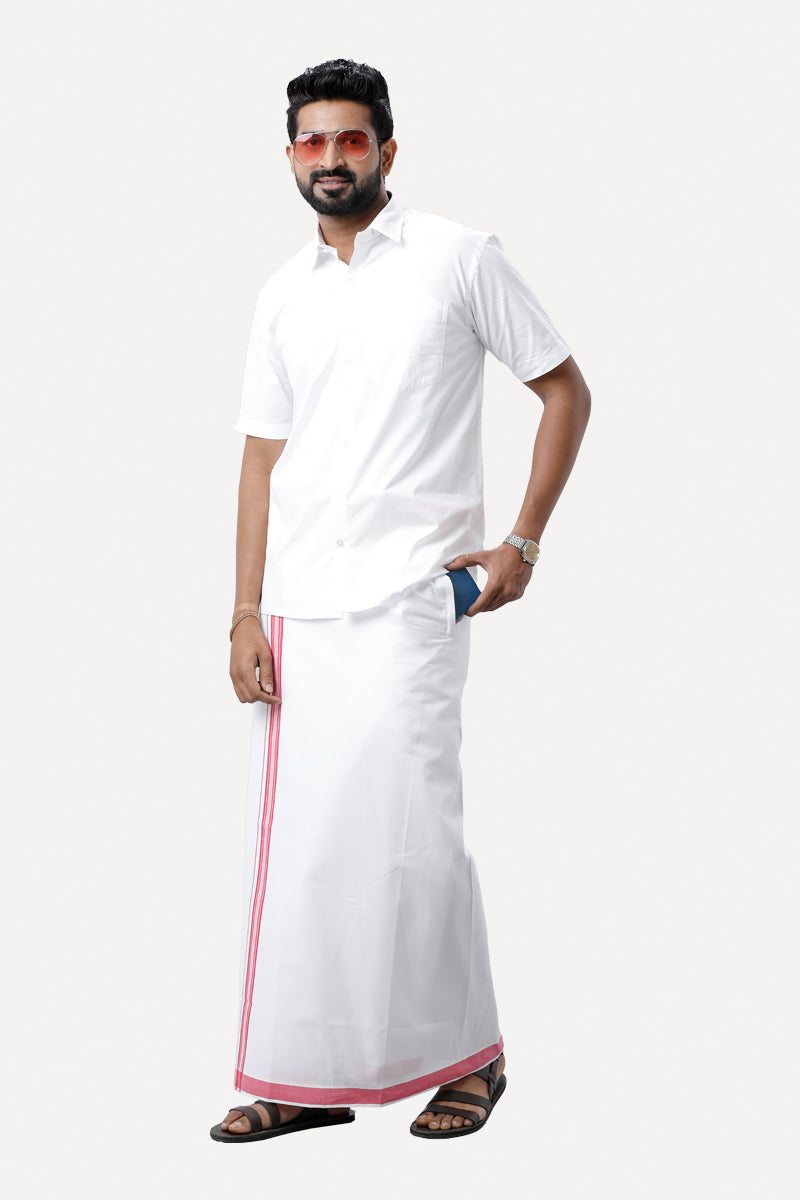
At Uathayam Store, we take pride in sourcing the highest quality fabrics and employing skilled artisans to craft each dhoti with meticulous attention to detail. Our garments are made from superior cotton and silk materials, ensuring utmost comfort and durability.
Explore our extensive collection featuring a diverse range of designs, patterns, and colours to suit every taste and occasion. Whether you prefer the simplicity of solid colours or the intricacy of embroidered motifs, we have something for everyone.
Conclusion
Although the lungi and dhoti share many characteristics with traditional South Asian clothing, they differ greatly in material, design, cultural significance, and wear-related occasions. The casual versatility and regional diversity of lungis contrast with the formal aura and ancient roots of the dhoti.
On the other hand, both outfits provide a strong link to cultural history, evolving through time to remain relevant in today's world.
Recognizing these distinctions enhances our appreciation of South Asian cultures and draws attention to the complex interplay in this dynamic region between dress, identity, and tradition.
Looking for the finest quality dhotis to elevate your traditional attire? Look no further than Uathayam Store, your one-stop destination for premium ethnic wear.




